

Suunto Blog
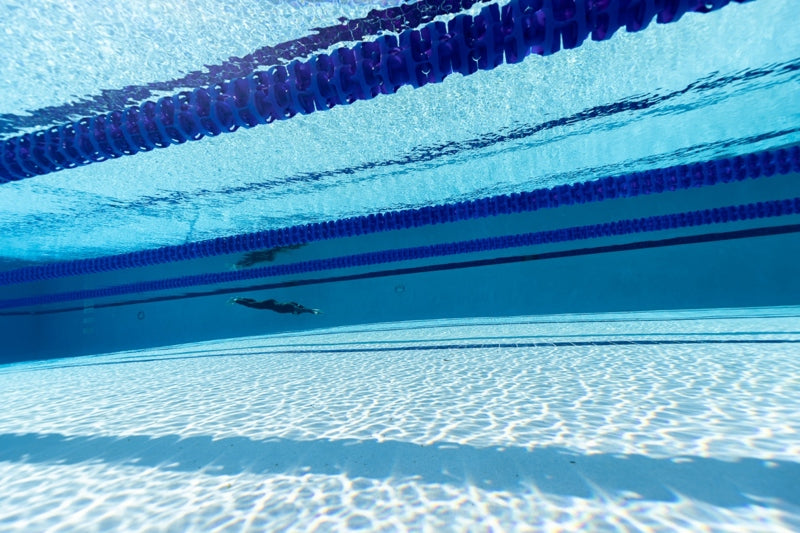
How to develop your mental immune system and fight stress
William celebrates after completing a new world record.
Depth freediving is unlike most other sports. To be successful, you need to be like a Zen master - calm and clear minded. Adrenalin, anger, stress, the flight and fight response are the sworn enemies of champion freedivers like Suunto ambassador William Trubridge. Instead, they cultivate calm and relaxation through a combination of mental and physical methods.
It’s his decades of exploring, developing and mastering these methods that led William to launch his new Mental Immune System program. It’s a double-pronged approach that uses these methods to dissipate stress, as well as to create barriers to its formation.
We caught up with the underwater Zen master himself to discuss the system. William just set a new underwater endurance swimming record by completing a distance of 50,575 m underwater on a breath hold, with no propulsive assistance. The distance was swum as 2,023 underwater laps of a 25 m pool in Nassau, Bahamas. He did it to raise awareness about the mental health crisis facing the world today.
Read on for our Q&A with William.
What is the Mental Immune System?
It’s a system for dealing with stress or anxiety issues. Or the general pressures of our age, and mental health problems that have become a real crisis in recent times. It’s like an app you can upload into your brain to work in the background. The idea is that it is programmed into your subconscious mind. It involves breathing and mental techniques that both have proven to have huge benefits for maintaining calmness and equanimity.
How did you come up with the idea?
I came up with the idea just by seeing how applicable the mental and breathing techniques that I used in freediving throughout my career were to deal with daily stress. Freediving is not like other sports in that the stress response, the adrenalin, the fight or flight reflex, cannot be channeled into a better performance in the same way they can in boxing or sprint running. In freediving it’s counterproductive because you’ll end up using oxygen quicker, maybe panicking underwater, which is the worst case scenario.
And the same applies to stress in our day to day lives. We’re not confronting sabertooth tigers anymore or living in the wild. Stressful situations normally involve family, loved ones, business, work, day to day life and in pretty much all of those if you respond with a flight or fight response you’re not going to go very far in life. The more calmness we can generate in those situations the more we will thrive. So freediving is very similar to daily life in that respect. I saw how effective these techniques were in freediving and when I started to use them myself in day to day life I found they were helpful and started recommending them to others and teaching them. I feel like it would be a crime for me to not make these techniques readily available.
Why now?
We’re living in an age of mental health crisis. It was getting worse before COVID, and then the pandemic catalyzed it. The statistics are frightening. 40% of adults suffer from anxiety disorder and/or depressive disorder. It’s not just that people feel a little anxious now and then; it’s an actual disorder. And a lot of people are taking drugs to cope, which is creating other dependencies. Then there’s the younger generations which is maybe even worse. Kids who are run into the ground by these anxiety problems. It’s something that is very difficult for our species at this point in time and we need all the techniques we can get to help us, especially methods that don’t come at a cost by causing dependencies and other stuff. The Mental Immune System is long lasting and it is self-replenishable and has no side effects.
Freedivers use a variety of breathing exercises.
How does the program work?
It’s a double prong approach. Because stress attacks us mentally and physically we need to respond with mental and physical techniques. The physical mostly revolves around breathing techniques; a specific type of breathing that’s simple enough to learn and switch over to and is hugely powerful. The mental techniques are similar to mindfulness. It’s basically a variation of mindfulness that uses the brain itself to break the spiraling thought patterns that we get into and the negative self-talk we do.
How is it different from mindfulness?
The game changer, the thing I think that makes the system so powerful, is it is programmed into the subconscious mind. If you’re freaking out, the last thing you’re going to do is sit in a corner and practice some funky breathing method or meditate with your eyes closed. You cannot do that in a business meeting or during an argument with another person. It has to be a technique that is there in the background and operating without your conscious involvement so you can be carrying out your role, whatever that may be. That’s the game changer - to program it into the subconscious mind. In the same way that our physical immune system is completely autonomic; we don’t tell our white blood cells to go and fight a virus. It has to be automatic. I think the same applies for the mental immune system.
Find out more here!
Lead images: André Musgrove
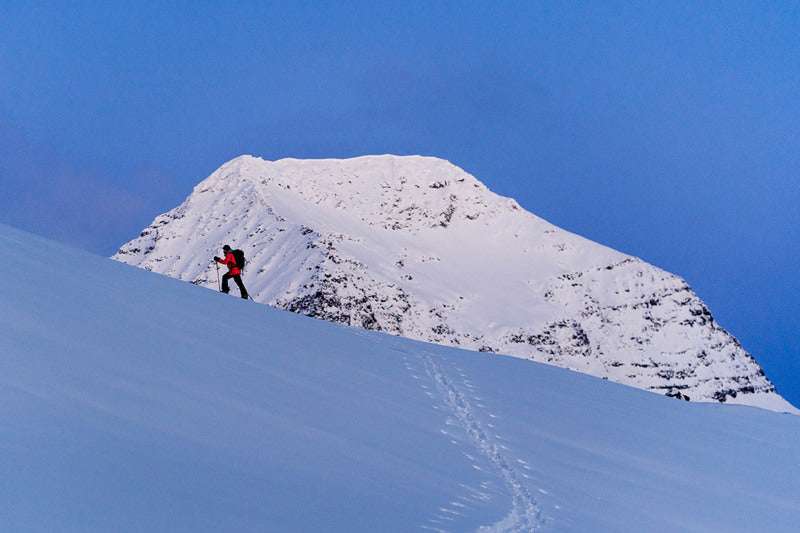
How to use Avalanche Terrain Maps
Avalanches are an integral part of the natural cycle in the mountain environments. The potential for avalanches exists on steep and even moderately steep snow slopes. When the terrain and the snowpack are right (or wrong for the backcountry travelers) avalanches can happen.
While the snow changes throughout the season, the terrain doesn’t. For snow to slide, the slope must be steep enough. Most avalanches occur on slopes between 30 and 45 degrees. That’s why we have added a new map layer in Suunto app highlighting those critical slope gradients.
You can use Suunto app and the Avalanche terrain maps on your phone, Android tablets, iPads and even newer Mac computers (Mac's with a M1 or M2 processor).
You can find the Avalanche terrain map layer in Suunto app: Go to the map view, tap the map layers button, and select the Avalanche terrain map layer. The darker the color, the steeper the slope. This information will help you plan your routes in the mountains. While planning the route, you can change between the different layers, like a regular outdoor map, the Avalanche terrain map, a ski touring heatmap and more.
A very important thing to understand about the Avalanche terrain map – and avalanches in general – is that avalanches may run out on flat and low-angle terrain. So, in addition to thinking where you are or where you plan to travel in the mountains, pay attention to what’s above you. Especially slab avalanches can be triggered remotely. A fracture in the snowpack can propagate along a weak snow layer until it reaches a part of the slope that is steep enough to slide.
Antti Autti studying the snowpack in Northern Norway.
Backcountry snowboarder and Suunto ambassador Antti Autti says he aims to plan his routes with as little exposure to avalanche danger as possible. “The further I can go without being in any avalanche terrain the better,” he says.
After planning a route using Suunto app he syncs it to his Suunto 9 Peak Pro for navigation.
“But no app alone is gonna keep me safe in the mountains. It is important to constantly educate myself and learn about snow safety so I can make the best possible decisions in the mountains,” he notes.
Images by Jaakko Posti
READ MORE
8 steps for planning trips in the mountains
How to find your way in the mountains
8 avalanche safety checks to tick off before the ski season
Follow Antti Autti’s adventures in his Arctic Lines video series where he ventures deep into the Arctic Circle in search of epic, unique and unridden lines in the frigid reaches of the Nordic north.

15 tips for beginners to fall in love with snorkeling
Learn everything you need to know to confidently explore the underwater world with just a mask, snorkel and fins.
Dipping beneath the surface of the ocean opens up an incredible new world. It can expand our minds and bring us closer to our blue planet. With snorkeling, there’s no need for dive training or to carry heavy dive equipment. All you need is a good mask and snorkel, fins, a rash guard, reef-safe sunscreen, basic knowledge, and the new Suunto 9 Peak Pro so you can use the “snorkeling mode”.
Are you planning on trying snorkeling for the first time? Or maybe looking for the best snorkeling locations for kids so you can share the experience with the whole family? Then before you go, read our 15 tips and keep everyone safe and ensure you all fall in love with snorkeling.
Become a good swimmer
This tip seems obvious and easy to overlook. But the better swimmer you are, the more enjoyable and relaxing your snorkeling trip will be. And being a good open water swimmer isn’t as straightforward as it sounds. It requires training and practice.
If you live far away from the ocean, or rarely go swimming in open water, then we recommend spending some time working on your swimming before your family snorkeling trip. Otherwise, you might find it strenuous rather than fun. Consider getting swimming lessons, and practice open water swimming. It’ll go a long way.
Read more about open water swimming!
Learn to relax in the water
This tip is really a continuation of the previous one. Being a good swimmer isn’t only about fitness, strength and technique. Though those are important for snorkeling in open water. It’s also about a kind of trust and relaxation. That’s also why it’s valuable to get lessons and spend time in open water before your snorkeling holiday.
The upshot is when we trust that our body can float, we no longer flail around in the water trying to keep ourselves from sinking. Instead, we can relax, let the water hold us and conserve our energy. This is another aspect of swimming we need to practice. It takes time to gain that trust.
Learn to breathe through the mouth
This is something you’ll start to learn when you get swimming lessons. It feels unnatural to begin with. It’s helpful to become familiar with before going on your snorkeling trip. While snorkeling, you’ll breathe in air through the snorkel above the surface into your mouth, and out through your mouth.
You can begin getting a feel for this before your trip by visiting your local pool and practicing with a mask and snorkel. Hold on to the edge of the pool with your face down in the water and your body and legs stretched out. Kick your legs to keep your body close to the surface and smoothly breathe in through the snorkel. By breathing calmly and deeply, you avoid building up C02 in the body. Breathe out through the snorkel slowly, too.
Start at your own level, but try to work up to extending your in and out breath to around four to five seconds.
Get snorkeling lessons
You’ve arrived at your snorkeling destination and the whole family is eager to get started. Slow your roll, and see if there’s somewhere you can get snorkeling lessons or get a guided session. You’ll learn more that way about gear, technique and what to look for. You’ll feel more confident and have more fun.
Get good gear
Invest in good quality snorkeling gear and learn to fit it properly. This will reduce annoying interruptions and obstacles when you and the family are out in the water. If you’re renting gear at your snorkeling destination, try to rent newish gear that’s the right size.
Position your snorkel properly
This is another thing you can practice in a pool. While snorkeling, the back of your head should be above the surface. Your snorkel should be on a 45 degree angle with roughly half the tube above the surface. Keep your head down and look a little ahead. This will prevent you from accidentally sucking in and swallowing water.
Make sure your mask and snorkel fit you and are positioned properly.
Expel water this way
It’s normal for a little water to get caught in the snorkel’s reservoir. It’s annoying because it interferes with having a smooth breath. If that happens you need to clear it. To do that, take a full breath and exhale forcefully to blow all the water out. Inhale slowly and gently. All clear!
Prevent mask fogging
Next to having water in your snorkel, a foggy mask is the most annoying thing. It stops you from really relaxing and taking it all in. There’s tons of blog article explaining how to prevent this, but it comes down to this:
Clean your new mask with dishwashing liquid before going snorkeling.
Apply a defogging solution before your sessions.
Rinse your mask once you’re back on land.
Go with a group or a buddy
We don’t recommend going snorkeling alone. Ever. It’s safer and more fun to go with a group or at least with a buddy. That way you can keep an eye out for each other. And make sure you tell someone onshore when and where you’ll be going and when you’ll be back by.
Track your snorkeling session with a Suunto 9 Peak Pro
The new Suunto 9 Peak Pro GPS sport watch is the fastest, most powerful watch we’ve ever made. It has a best in-class battery life and is the first Suunto watch to include a snorkeling - or mermaid sport mode.
You can track your snorkeling session, including your dives down to -10 m, with this watch and it will tell you your depth while you’re out there. Back on land, you’ll be able to see more info about your dive in Suunto app, including a map of where you swam, distance, duration, heart rate and depth.
Read more about how to use the snorkeling mode here!
How to dive down
This is a skill worth learning because it will allow you to see marine life more closely and in detail. Just remember, don’t push it. The big risk of breath holds is they can lead to blackouts and having one underwater is dangerous. So consider getting professional lessons and start with shallow dives and follow your max depths and time it on your watch. Then gradually extend the times and depths as your capacity increases.
Here’s how to dive down: take a deep breath (but do not hyperventilate) and roll forward by bending your upper body to a 90 degree angle. Your feet will be vertical above the surface and once they hit the water start kicking and swimming down. Make sure you equalize by pinching your nose to avoid any discomfort in your ears as the pressure changes. Always do this with a buddy who stays at the surface while you dive.
Keep it calm and sheltered your first time
This tip is especially important if it’s your first time and you’re not familiar with swimming in open water. Choose a time that’s calm — you’ll get better underwater visibility that way too — and in an area that is sheltered from wind and swell. Then you won’t get pushed around as much and use less energy. Use MyRadar to keep track of the weather.
Learn to read the ocean
This is another thing that takes time. It’s especially hard to learn if you have never lived close to the sea. One of the best ways to learn this is to talk to an informed local and ask them about the currents, tides, dominant wind directions and other things to look out for. With this local knowledge, you’ll be better able to choose your time and locations.
Prepare your body before taking the plunge
You know your location and time, you have all the gear and are set to go. One last thing — get your body ready. Here is how:
Make sure you are well hydrated. Drink plenty of water in the hours before your session.
Don’t go out with a full or empty stomach. Have a snack shortly before you go.
When you get to the beach, spend 15 minutes stretching and doing mobility exercises to warm up your body.
Know your limits
You want to have a snorkeling experience that’s pleasurable and makes you and the family love it and want more. So know your limits and the limits of everyone you’re going snorkeling with and respect them. This specifically relates to depth, conditions and duration.
If you or someone else in your group isn’t confident in deeper water, don’t push it. Stay in shallower water where they feel comfortable and will have a good time. Same principle for conditions; if a wind whips up while you’re out there and it makes it more challenging for your kids, then don’t be afraid to call it a day. There’s always tomorrow.
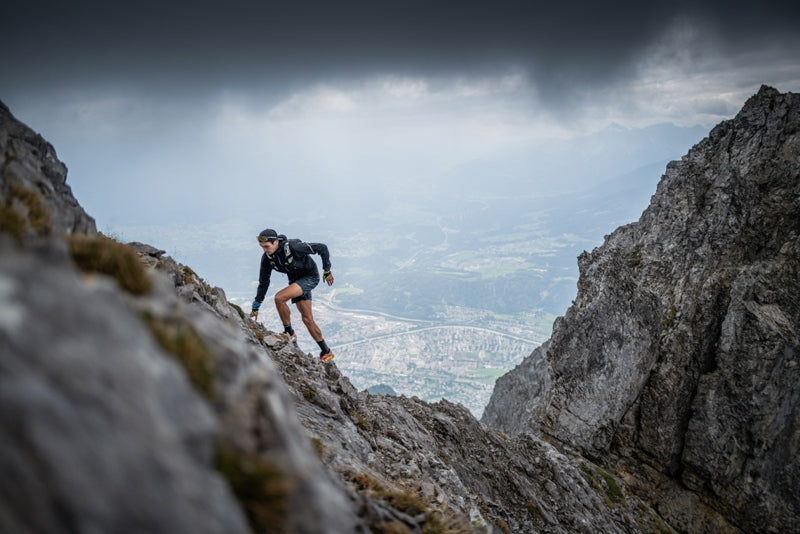
Why navigating with a Suunto has never been better
GPS is just one of many. It stands for Global Positioning System and is a US based global navigation satellite system (GNSS). There are four other GNSS and counting. With more of them connecting to your navigation device you’ll get better accuracy, more often, than with one only. That’s because it’s more likely a satellite will be directly above your position and able to send and receive clear, fast, unobstructed signals.
How GNSS work
It almost seems like science fiction: hundreds of satellites in orbit around the planet sending and receiving signals from billions of devices. But how does it all work?
A GNSS system is a group of satellites strategically placed in orbit to generate and relay geospatial data via radio signals to connected sensors on the earth – including your Suunto watch. GNSS satellites orbit the planet once every 11 hours, 58 minutes and two seconds. Each satellite transmits coded signals containing the satellite’s precise orbit details and a very stable time stamp from an atomic clock.
GNSS systems have three parts:
Space: the satellites orbiting our planet.
Control: This part includes ground stations located around the equator to control, monitor, track and communicate with all the satellites.
Users: That’s you and your Suunto watch. Or your mobile phone. Your car’s navigation system. The entire IoT! Each device includes a GNSS receiver which comprises an antenna and a processor. The former receives the signal, while the latter decodes it.
Five systems is better than one
With the release of the Suunto 9 Peak Pro, navigating with a Suunto watch and accurately tracking the route of your activity has never been better. The GPS, Galileo, GLONASS, BeiDou and the QZSS global navigation satellite systems all work with the new sleek and versatile watch. Moreover, the watch’s navigation system is controlled by a new Sony chip that requires less power, resulting in less drain on the battery.
“The increased number of visible satellites that can be utilized simultaneously will improve the likelihood your watch positions you accurately,” says Markus Kemetter, product manager at Suunto. “This is especially the case when you’re in areas with obstacles, such as a city with skyscrapers or between steep mountains where part of the sky is blocked. “In addition to being more accurate, the Suunto 9 Peak Pro’s navigation system consumes less power giving the user longer battery life.”
“Another super important thing affecting your tracking accuracy is the assistant data coming from Suunto app every time you sync,” Markus continues. “Keeping that up to date is crucial for accuracy – so sync regularly.”
They work together by default
With all those satellites orbiting the planet and connecting to your watch, it doesn’t matter whether you’re running in Manhattan or mountaineering in the Himalayas. You can count on the best accuracy of any Suunto device we’ve ever made. And there’s no need to fiddle with the settings to make any selections.
In the Suunto 9 Peak Pro all five GNSS are simultaneously active by default. You don't need to do anything"
Change your navigation settings to extend your battery life
You can change the Suunto 9 Peak Pro’s navigation settings to extend its battery life.
Performance mode
This is the setting for optimal accuracy. In Performance modem, the Suunto 9 Peak Pro’s battery can last for 40 hours before requiring a charge.
Endurance mode
Selecting Endurance mode in your Suunto 9 Peak Pro puts the watch’s navigation chip into “duty cycle mode” – it sleeps half a second and switches on for half a second to get a fix. This extends the battery life and provides a less accurate, but still reliable track. The accuracy will, however, become poorer in more difficult terrain.
Tour mode
In this mode, the watch’s battery can last up to 300 hours. The mode extends the battery life by having the navigation chip on for 1–2 minutes every 30 minutes. This reduces the accuracy and is usually used by people who are traveling light and fast, can't regularly access a charge and don’t want to carry a battery pack with them.
Lead image: © Philipp Reiter
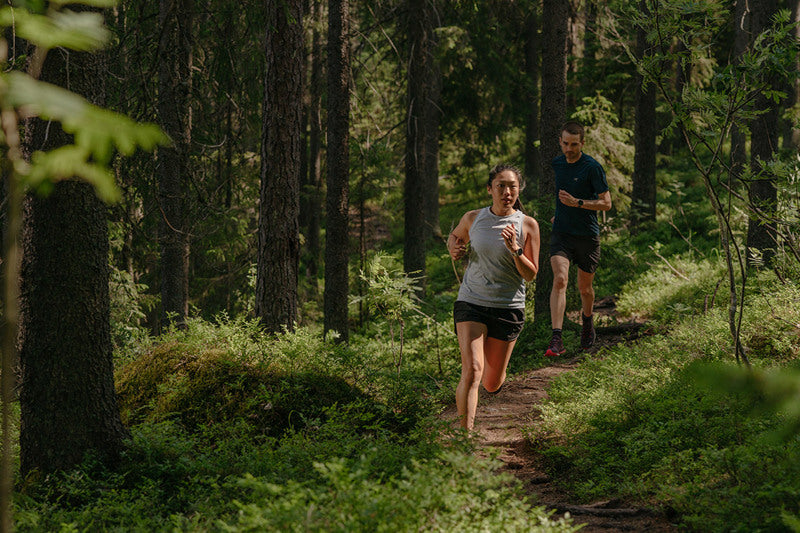
Plan your interval workouts with Suunto app
Complex training sessions just got a bit easier – at least to plan and follow. The rest is up to you and your coach!
You can build structured workouts in Suunto app. This is especially useful with complex sessions, like intervals. Use Suunto app to build the workout step by step from warm-up to cool-down. You can find the Workout builder under the Watch section in Suunto app.
When starting to create a new workout you can set a target date for it or save it in your app’s workout library. If you have set a target date, your watch will suggest the right workout on the right day.
Your workouts can be based on distance, duration, lap button press or a mix of them. You can, for example, have a warm-up that ends with a lap button press followed by 1 km intervals with a five minute recovery. The target intensity for your workout can be based on heart rate, power, pace or speed.
Created workouts are synced as SuuntoPlus guides to your watch. Select the correct workout guide before starting the exercise. So, select the activity type and before hitting ‘Start’ go down to Options > Suunto Plus > Guides and you will see your planned session there. Select that one and go.
During the exercise SuuntoPlus will notify you about upcoming steps in your workout and provide real-time guidance for your interval training. Happy training!
NOTE: You can also sync structured workouts to your Suunto from our partner services, like TrainingPeaks. Learn more about SuuntoPlus here.
Learn more about building structured workouts with Suunto app
Learn more about training zones
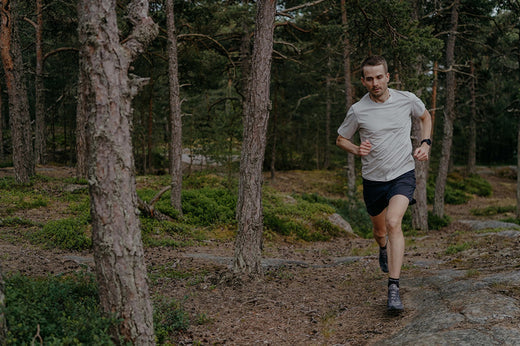
Run with power
Working out at the right intensity is the key to systematic and effective training. To get the benefits, you first need to set up your intensity zones. With Suunto watches you can set up running specific intensity zones based on all three; heart rate, pace and running power. Adjust your intensity zones at Settings > Training > Intensity zones > Advanced zones.
Running power is very useful during ups and downs as it takes into account elevation gain and this way helps you maintain a steady effort in changing terrain. It is also valuable for interval sessions as it reacts quicker than heart rate to changes in intensity.
Suunto 9 Peak Pro measures running power from the wrist combining GPS and barometric data. Ensure your weight is correct in the watch settings for the algorithm to work properly. Your weight is set at Settings > General > Personal > Weight.
Use a sport mode with power – or create your own
To see your power during your run, select a sport mode that shows running power on your screen. You can use for example sport modes like Trail running power or Running power.
This is how power – 265W in this case – is shown in the default Trail running power sport mode. You can also use the Running power sport mode – or customize your own with Suunto app.
Running power is one of the data fields you can add in your custom sport modes. You can select data like current power (Power 3 sec, Power 10 sec, Power 30 sec), average power and max power. You can also select to see Lap average power, Lap max power and Interval average power on your custom screens.
After the run you can analyze your power in Suunto app.



































































